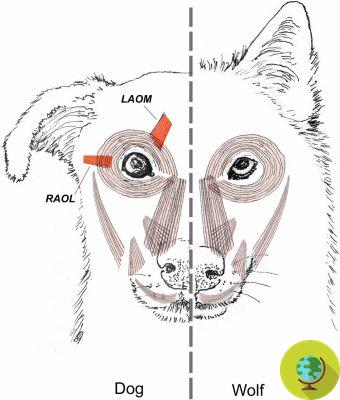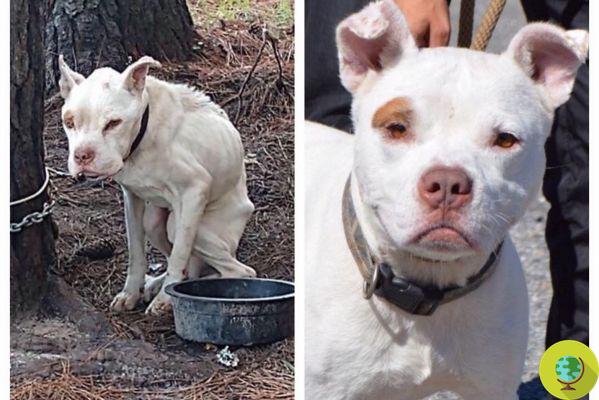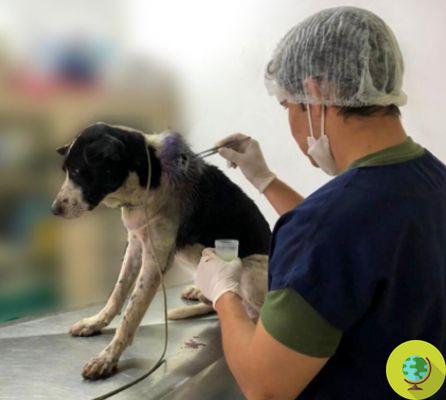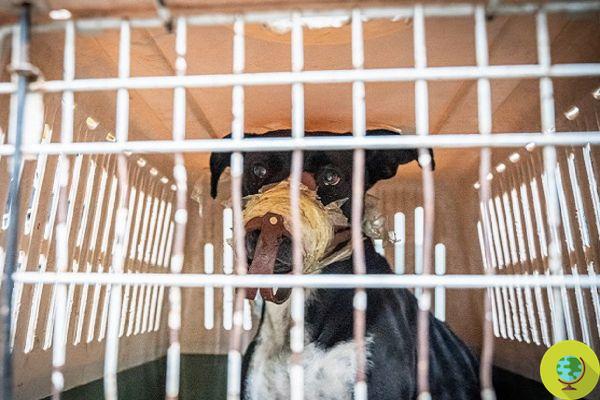Dog tapeworm (Dipylidium caninum) is a fairly common infection in our animal friends and which, despite the name, can actually affect cats and in very rare cases even humans. Let's find out better what it is, how to recognize and treat it.
He is about to end up run over, his mother saves himLa had of the cane (Dipylidium caninum) is a fairly frequent infection in our animal friends and which, despite the name, can actually affect cats and in very rare cases even humans. Let's find out better what it is, how to recognize and treat it.
Our dogs, just like us, are exposed to microorganisms and parasites of various kinds every day and for this reason they can contract various diseases. Among the situations that occur with a certain frequency there is the so-called dog tapeworm, due to the presence of Dipylidium caninum, a cestode or flat worm capable of growing and reproducing in the intestine of mammals.
Index
What is dog tapeworm and symptoms
It is an intestinal parasitosis in which the adult worm of the aforementioned species lives and proliferates in the intestine of the dog (but also of the cat).
The symptoms of tapeworms are most of the time light and linked above all to gastrointestinal problems but can also lead to other inconveniences for our animal.
In particular when there is the presence of tapeworms we can notice:
- diarrhea (sometimes intermittent)
- weight loss simultaneously with increased appetite
- anal itching which causes the animal to lick itself frequently
- vomiting (especially if the tapeworm is neglected or in conjunction with other infections)
The weight loss (despite the animal's increased appetite) is due to the fact that it is the tapeworm that steals its nourishment in order to grow and continue to produce its eggs.
A symptom not related to the stomach-intestine but absolutely not to be underestimated as a possible indicator of this infection is the deterioration of the health of the dog's coat, usually an opacification of the coat.
If the infection is particularly severe, convulsions or seizures may also occur.
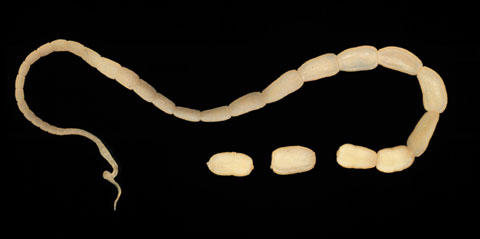 Gallery
Gallery
Causes
Unlike human tapeworms, which usually attack via contaminated food, the transmission of this infection in animals occurs through fleas. In fact, it is possible that the dog, by scratching or licking its hair, ingests an infected flea and consequently gives the possibility to the tapeworm to enter its organism and proliferate in the intestine.
The adult tapeworm has a length that can even reach 60-70 cm and is white or light yellow in color. It is a flat-shaped worm (similar to the one that can infect the human being) that once it arrives in the intestine manages to take root through its head equipped with scholice (an organ that allows it to adhere to the intestinal mucosa). It can thus produce the eggs which it closes in a sort of closed structures or containers (proglottids).
It is precisely these that are often found on the coat of infected animals, in the kennel or in other environments that the dog or cat frequents. They can be recognized as they resemble grains of rice. These are eliminated through the animal's feces (although not every time it defecates) and in this way the transmission of the disease continues as a flea can re-ingest it, become infected and then contaminate another animal that inadvertently ingests it.
Basically, therefore, the tapeworm needs a double passage or the so-called two hosts to be transmitted: one intermediate (the flea) and the other final (a mammal, frequently dogs and cats).
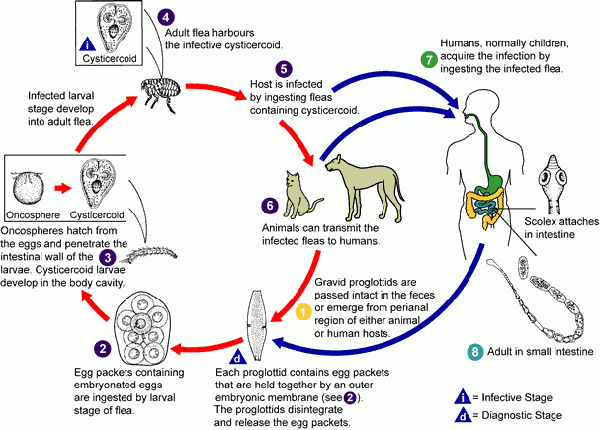
Gallery
Diagnosis and therapy
Generally the dog owner notices some symptoms in his pet or he notices proglottids (rice grains) attached to the hair or in the kennel. To identify the presence of tapeworms, stool tests are usually done, the problem is that this could give a negative result (false negative) as the parasite is not always eliminated in all evacuations.
The therapy for tapeworms in dogs involves taking an active drug against parasitic infestations from Cestodes (type of worms to which this tapeworm belongs) at the same time as the treatment to eliminate fleas both from the animal and from the environments in which it lives. . If other animals live in the house, it is advisable to carry out the treatment on them as well.
As for prevention, however, the only system is to act avoiding contamination by fleas that could be infected and consequently transmit the tapeworm. In this regard, read also:
- How to protect your dog from fleas
- The 10 best natural remedies to protect your dog from fleas
- What natural remedies for annoying fleas?










